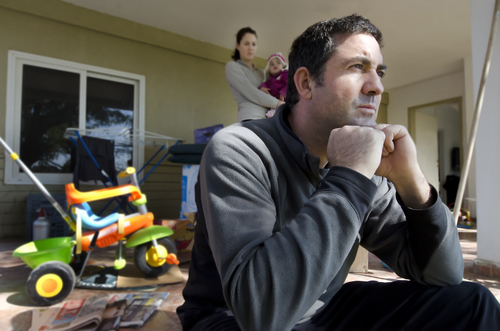- 22
- Mar
- 2018
Help for the Hungry
- Posted ByAdmin
- InCommunity, In the News
Part Two of our series on The New Face of Hunger
Millions of working Americans don’t know where their next meal is coming from. In this series National Geographic explores hunger in three very different parts of the United States, each giving different faces to the same statistic: One-sixth of Americans don’t’ have enough food to eat. As you follow with us along their journey please bear in mind that although these stories are spread across the country, we witness the same struggles in our own community. It could be your neighbor, friend or family member. It could be something you know about or something being kept in secret. Our idea in sharing this series is to help put names and faces to problems our community is facing.

More than 48 million Americans rely on what used to be called food stamps, now SNAP: the Supplemental Nutrition Assistance Program. The average monthly benefit $133.07 a person, is less than $1.50 a meal. SNAP recipients typically run through their monthly allotment in three weeks, then turn to food pantries. Who qualifies for SNAP? Households with gross incomes no more than 130 percent of the poverty rate. For a family of four that qualifying point is $31,005 a year.*
As the face of hunger has changed, so has its address. The town of Spring, Texas, is where ranchland meets Houston’s sprawl, a suburb of curving streets and shade trees and privacy fences. The suburbs are the home of the American dream, but they are also a place where poverty is on the rise. As urban housing has gotten more expensive, the working poor have been pushed out. Today hunger in the suburbs is growing faster than in cities, having more than doubled since 2007.
Yet in the suburbs America’s hungry don’t look the part either. They drive cars, which are a necessity, not a luxury, here. Cheap clothes and toys can be found at yard sales and thrift shops, making a middle-class appearance affordable. Consumer electronics can be bought on installment plans, so the hungry rarely lack phones or televisions. Of all the suburbs in the country, northwest Houston is one of the best places to see how people live on what might be called a minimum-wage diet: It has one of the highest percentages of households receiving SNAP assistance where at least one family member holds down a job. The Jefferson sisters, Meme and Kai, live here in a four-bedroom, two-car-garage (Get More Info here), two-bath home with Kai’s boyfriend, Frank, and an extended family that includes their invalid mother, their five sons, a daughter-in-law, and five grandchildren. The house has a rickety desktop computer in the living room and a television in most rooms, but only two actual beds; nearly everyone sleeps on mattresses or piles of blankets spread out on the floor.
Though all three adults work full-time, their income is not enough to keep the family consistently fed without assistance. The root problem is the lack of jobs that pay wages a family can live on, so food assistance has become the government’s—and society’s—way to supplement low wages. The Jeffersons receive $125 in food stamps each month, and a charity brings in meals for their bedridden matriarch.
Like most of the new American hungry, the Jeffersons face not a total absence of food but the gnawing fear that the next meal can’t be counted on. When Meme shows me the family’s food supply, the refrigerator holds takeout boxes and beverages but little fresh food. Two cupboards are stocked with a smattering of canned beans and sauces. A pair of freezers in the garage each contain a single layer of food, enough to fill bellies for just a few days. Meme says she took the children aside a few months earlier to tell them they were eating too much and wasting food besides. “I told them if they keep wasting, we have to go live on the corner, beg for money, or something.”
Stranded in a Food Desert
What is a food desert? Families that are more than half a mile from a supermarket and don’t own a car, because of poverty, illness, or age. Public transportation may not fill the gap. Small markets or fast-food restaurants may be within walking distance, but not all accept vouchers. If they do, costs may be higher and nutritious options fewer.
Jacqueline Christian is another Houston mother who has a full-time job, drives a comfortable sedan, and wears flattering clothes. Her older son, 15-year-old Ja’Zarrian, sports bright orange Air Jordans. There’s little clue to the family’s hardship until you learn that their clothes come mostly from discount stores, that Ja’Zarrian mowed lawns for a summer to get the sneakers, that they’re living in a homeless shelter, and that despite receiving $325 in monthly food stamps, Christian worries about not having enough food “about half of the year.”
Christian works as a home health aide, earning $7.75 an hour at a job that requires her to crisscross Houston’s sprawl to see her clients. Her schedule, as much as her wages, influences what she eats. To save time she often relies on premade food from grocery stores. “You can’t go all the way home and cook,” she says.
On a day that includes running a dozen errands and charming her payday loan officer into giving her an extra day, Christian picks up Ja’Zarrian and her seven-year-old, Jerimiah, after school. As the sun drops in the sky, Jerimiah begins complaining that he’s hungry. The neon glow of a Hartz Chicken Buffet appears up the road, and he starts in: Can’t we just get some gizzards, please?
Christian pulls into the drive-through and orders a combo of fried gizzards and okra for $8.11. It takes three declined credit cards and an emergency loan from her mother, who lives nearby, before she can pay for it. When the food finally arrives, filling the car with the smell of hot grease, there’s a collective sense of relief. On the drive back to the shelter the boys eat until the gizzards are gone, and then drift off to sleep.
Christian says she knows she can’t afford to eat out and that fast food isn’t a healthy meal. But she’d felt too stressed—by time, by Jerimiah’s insistence, by how little money she has—not to give in. “Maybe I can’t justify that to someone who wasn’t here to see, you know?” she says. “But I couldn’t let them down and not get the food.”
To supplement what they get from the food pantry, the cash-strapped Reams family forages in the woods near their Osage home for puffball mushrooms and grapes. Kyera Reams cans homegrown vegetables when they are in season and plentiful, so that her family can eat healthfully all year. “I’m resourceful with my food,” she says. “I think about what people did in the Great Depression.”
